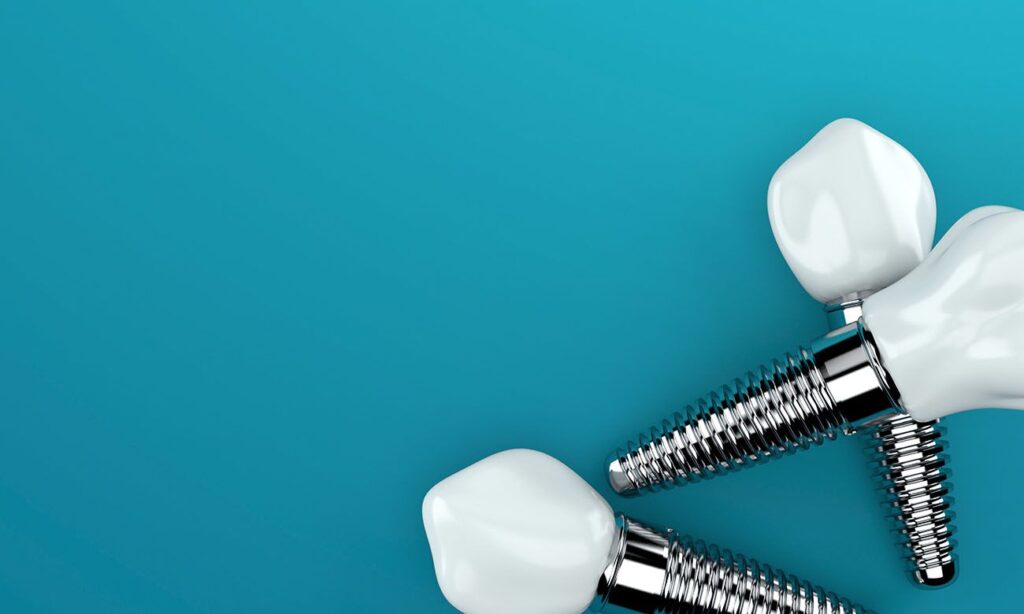If you lose one or more teeth, you might suffer from dissatisfaction with smile aesthetics, oral dysfunction, and a higher risk of further dental problems. You can consult with your dentist to find tooth replacement treatment that can resolve these issues. One restorative dental solution that yields comprehensive results is implant dentistry.
Not only are dental implants highly beneficial for dental restoration, but they also come in several types depending on your unique oral health needs. A dentist can find the right one for your smile when you schedule a dental consultation. You can also check out three dental implant options that your dentist might recommend when you read on.

Single Dental Implant
A single dental implant will replace one missing tooth in your smile. However, you can receive more than one of these types of implants in order to fully restore your smile if needed.
The device features a titanium post anchor that a dentist will surgically place into the jaw. It fuses with the jawbone there to establish a solid foundation for the rest of the implant. It also features a connective abutment piece where the dentist will attach the prosthetic tooth, a crown.
You can feel more confident in your smile with gaps caused by missing teeth filled by this implant. The crown will resist staining for a long-lasting, bright, and beautiful finish that you can feel proud to show off.
Implant-Supported Dental Bridge
If you lose three or more teeth in a row, you might benefit from an implant-supported dental bridge. The process to receive this type of implant is similar to a single implant. But it uses two anchors, one to support each end of the dental bridge.
With a dental implant in place, you can improve your oral function. You may chew, bite, and speak with greater ease thanks to this reliable device. The secure hold of an implant will mean you do not have to worry about slippage from your device either like you might with a removable option.
All-on-Four Dental Implant
The All-on-Four dental implant gets its name from the four anchors it uses to support an entire arch of prosthetic teeth. You can replace the top or bottom arches of your smile or both with this type of implant.
Dental implants differ from other tooth replacements because they can replace teeth below the gumline. Its anchors substitute for missing roots of the teeth. When you lose a tooth, the jawbone no longer receives stimulation from a tooth root. In its absence, the jawbone might deteriorate, causing shrinkage in the jaw and other dental damage.
You can prevent further dental deterioration by seeking comprehensive tooth replacement through implant dentistry. With implants in place, the jaw receives stimulation again and can stay strong and healthy.
Frequently Asked Questions
Can dental implants be used in both the upper and lower jaw?
Yes, implants can be placed in the upper and lower jaw to replace missing teeth. The process is similar for both, though the upper jaw sometimes requires additional planning due to its softer bone or sinus location. A thorough exam will determine if the bone in each area is strong enough for implants. In some cases, bone grafting may be needed before placement.
What makes All-on-Four implants more stable than removable dentures?
All-on-Four implants are anchored directly into the jawbone, providing fixed, secure support for a full arch of teeth. Unlike removable dentures, they don’t shift, click, or rely on suction to stay in place. The angled placement of the back implants allows for greater stability and often eliminates the need for bone grafts. This design restores chewing function and prevents the bone loss that occurs with traditional dentures.
Are implant-supported bridges a good option for patients with weakened adjacent teeth?
Yes, implant-supported bridges are ideal when neighboring teeth aren’t strong enough to support a traditional bridge. Since they anchor directly to implants instead of other teeth, they don’t place added stress on surrounding structures. This makes them a reliable solution for patients with compromised enamel or previously restored teeth. They also help preserve bone and improve long-term stability.
Will my implants look different from my natural teeth?
No, properly made implant crowns are designed to blend in with your natural teeth. Your dentist will match the shape, size, and color to ensure a seamless appearance. High-quality materials like porcelain or zirconia provide a natural look and feel. Most people can’t tell the difference between a well-crafted implant and a natural tooth.
How do implants help prevent bone loss in the jaw?
Dental implants act like artificial tooth roots, stimulating the jawbone each time you bite or chew. This stimulation keeps the bone active and prevents the shrinkage that typically follows tooth loss. Without it, the bone gradually weakens and resorbs. Implants help maintain facial structure and long-term oral health by preserving bone density.
Do I need a separate implant for every missing tooth?
Not always. While single implants are used for isolated gaps, multiple missing teeth can often be replaced with fewer implants supporting a bridge or denture. For example, just four to six implants can secure a full arch of teeth using All-on-Four or similar systems. Dr. Morris will determine the best layout based on your bone health, number of missing teeth, and treatment goals.
Reduce your risk of oral health concerns by replacing missing teeth with dental implants. Schedule a consultation with your dentist to determine your eligibility for this treatment.
